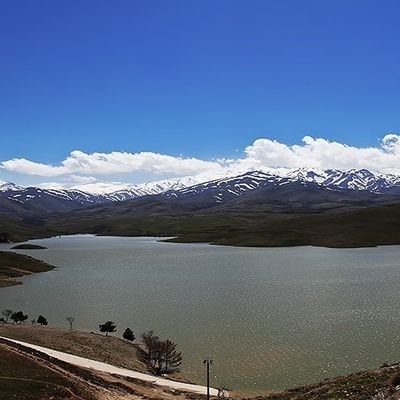SAEDNEWS, Desalination is essential for delivering freshwater in dry locations, but it also produces a substantial byproduct: brine. By converting brine into a resource, the UAE is pioneering new approaches to environmental sustainability, resource management, and economic growth.

According to SAEDNEWS, Water shortage is a severe issue in desert places such as the UAE, where desalination facilities supply the majority of freshwater. However, the method has a disadvantage: it produces brine, a highly concentrated saltwater waste that causes environmental problems.
In recent years, the UAE has converted this issue into an opportunity by researching ways to use desalination brine responsibly. From industrial uses to environmental efforts, these ideas show how brine may be transformed from a waste to a useful resource. This blog digs into how brine is reused efficiently and what we can learn from the UAE's success.
Brine is a byproduct of desalination that has a high concentration of salt and minerals. Every liter of freshwater produced yields roughly an equal quantity of brine. Disposing of this saline trash is difficult since it might harm marine habitats when released into the ocean.
Key issues include- Higher salinity in seawater: This can harm aquatic life.
- Thermal pollution: Brine discharge is frequently warmer, affecting marine ecosystems.
- Environmental contamination: Brine might include chemicals employed in the desalination process.
The UAE, which generates more than 20% of the world's desalinated water, is severely affected. Recognizing these issues, the country has devised novel ways to recycle brine.
One of the most potential applications of brine is the extraction of precious minerals such as magnesium, calcium, and lithium. These minerals are in great demand throughout industries:
- Magnesium and calcium: Applications include building, agriculture, and medicines.
- Lithium: A necessary component in batteries for electric cars and renewable energy storage.

Example of Lithium Recovery Initiatives
To achieve its renewable energy targets, the UAE is looking into lithium extraction technology from brine. Desalination plants can use modern filtering processes to convert brine into a valuable raw material supply.
Brine may be diluted and utilized in regulated agricultural settings to cultivate salt-tolerant crops such as quinoa, barley, and certain halophytes. The UAE is looking at halophyte farming as part of its food security policy. These salt-tolerant plants have several applications, including cattle feed, biofuels, and potentially human consumption. By incorporating brine into irrigation systems, the UAE maximizes resource efficiency while also encouraging agricultural innovation.
Brine may be utilized to create power using novel energy recovery methods such as reverse electrodialysis (RED). This technology uses the salinity differential between brine and freshwater to generate energy. Energy recovery systems are being explored in the UAE to investigate brine as a renewable energy source. These initiatives attempt to reduce some of the energy costs associated with desalination, so making the process more sustainable.
Brine is also being used in sectors like building and chemical manufacture. Its mineral-rich nature qualifies it for producing:
- Cement and Concrete: Salts from brine may be utilized to make high-performance construction materials.
- Industrial salts: Brine-derived salts are useful for deicing roadways, water treatment, and chemical operations.
The UAE's construction sector is using brine-derived products to minimize its reliance on imported raw materials, lowering prices and increasing sustainability.
Instead of dumping brine into the ocean randomly, it may be utilized to build artificial marine ecosystems or to support aquaculture.
A Case Study of Fish Farming in the UAE
Brine is used in aquaculture to grow salt-tolerant fish like tilapia and seabass. These farms not only provide a sustainable food source, but they also lessen the environmental effect of brine discharge through closed-loop recycling.

The UAE uses brine to repair damaged land and build artificial wetlands. These programs contribute to the restoration of biodiversity and increased environmental resilience.
Example of Wetland Development
In locations with little freshwater, diluted brine is utilized to maintain wetland habitats. These wetlands serve as carbon sinks and homes for local species, showcasing a novel application of desalination byproducts.
The Future of Brine Use in the UAE and Beyond
The UAE's success in controlling desalination brine provides a model for other countries experiencing similar issues. Key trends include:
- Technological Advancements: Breakthroughs in AI and machine learning are improving brine reuse techniques.
- Global Collaboration: Partnerships between countries and organizations can spur innovation.
- Public-Private Partnerships: Involving private enterprises in brine initiatives can lead to more finance and expertise.
The UAE's approach to desalination brine demonstrates how obstacles may be transformed into possibilities. The country is providing an example for resource management in water-stressed areas by mining precious minerals, promoting sustainable agriculture, and investigating energy recovery. As the worldwide demand for desalinated water rises, implementing new brine usage technologies is critical to environmental and economic sustainability. The UAE's experience proves that, with the appropriate technology and devotion, even garbage can be transformed into a valuable resource, paving the path for a greener and more resilient future.

